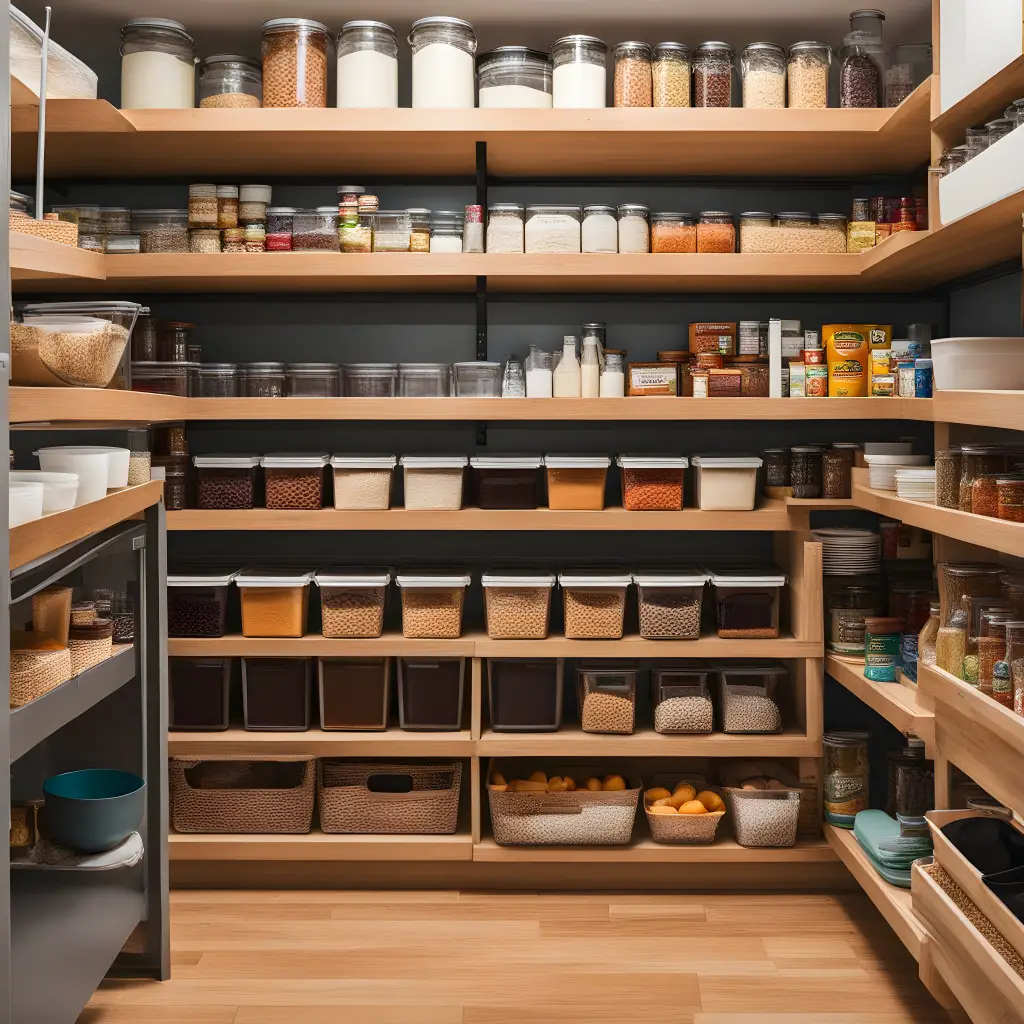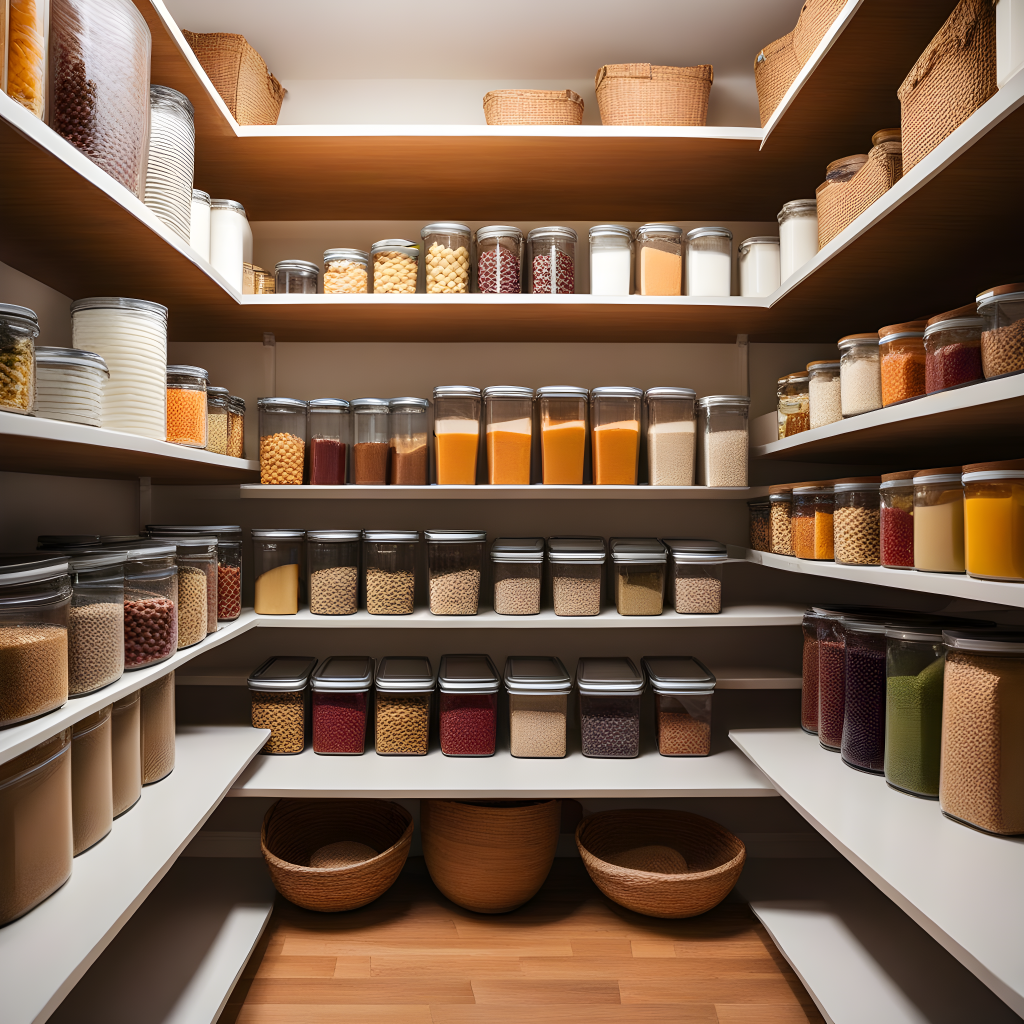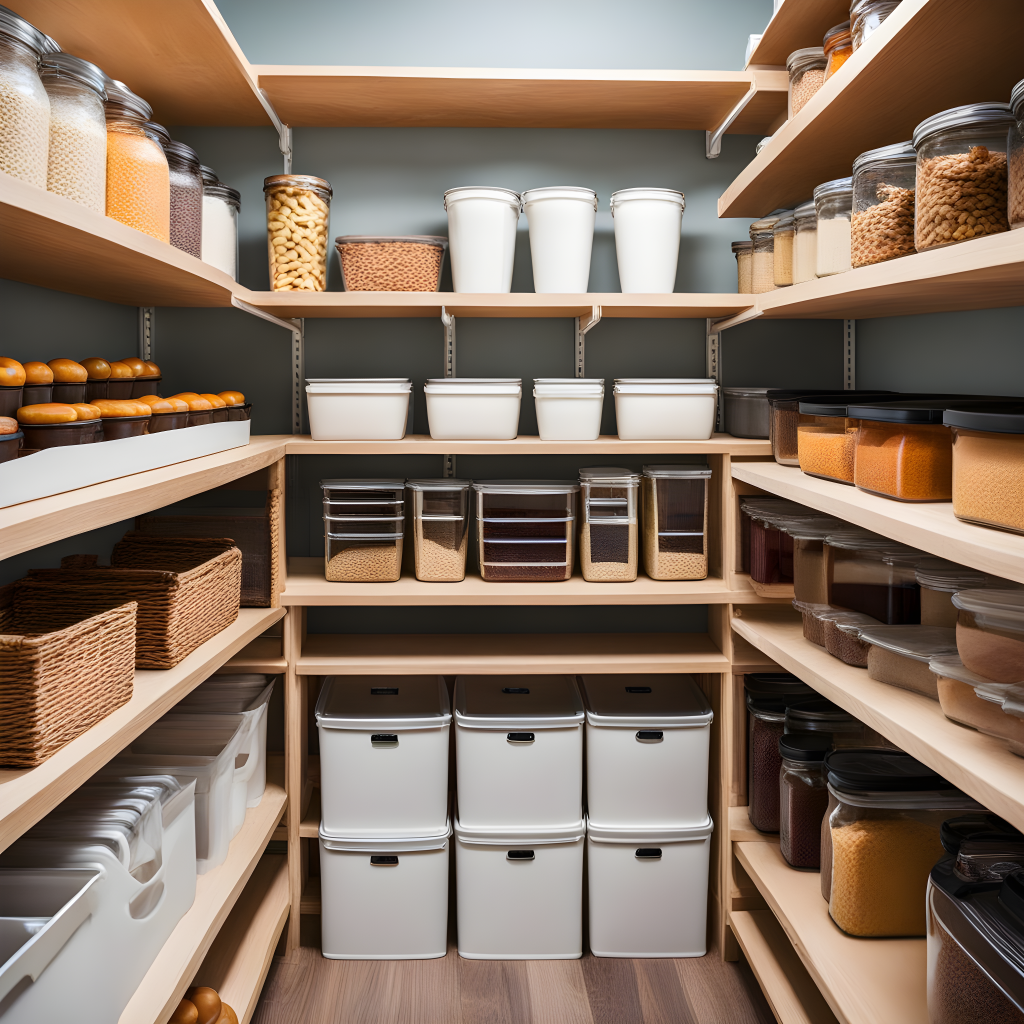
Discover the most efficient methods and techniques on how to organize a pantry with deep shelves. Unlock the full potential of your storage space with our comprehensive guide.
Ah, the pantry—a vital component of any kitchen. Whether you’re a professional chef or someone who cooks only occasionally, a well-organized pantry can truly make all the difference. Especially when we’re talking about pantries with deep shelves, organization becomes crucial. Dive into this guide and discover how a little time and effort can transform your pantry from chaotic to coordinated!
How to Organize a Pantry with Deep Shelves?

Deep shelves in a pantry provide ample space, but they also come with their own set of challenges. It’s easy to push items to the back and forget about them, and soon enough, you’re dealing with expired products or things you can’t even reach. So, let’s tackle this head-on, shall we?
1. Understanding Your Pantry’s Layout
Before diving into organization techniques, take a moment to assess your pantry. Understand the depth, width, and height. By gauging your available space, you can select the most appropriate organizational solutions.
2. Categorize Your Items
Group items into categories, like spices, canned goods, baking ingredients, and snacks. This simplifies your pantry’s structure and makes it easier to locate items when you need them.
3. Using Clear Containers
Transparent containers can be a real game-changer. They allow you to see exactly what’s inside, making it easier to identify and grab what you need.
4. Implementing Lazy Susans
Remember those hard-to-reach corners on your deep shelves? Lazy Susans are the answer. With a simple spin, you can access items without having to reach far.
5. Vertical Space Utilization
Don’t just think horizontally. Use shelf risers to make use of the vertical space, giving you additional layers of storage.
6. Label Everything
Once you’ve sorted items into containers, label them. This ensures you and everyone else can find things quickly, and it helps keep everything in its place.
7. Frequent Items in Front
Always keep the items you use daily on hand. This way, you won’t have to shuffle through everything to find your morning cereal.
8. Regular Check-ins
Once in a while, revisit your pantry to check for expired items or to re-arrange things based on changing needs.
9. Avoid Overstocking
Although it might be tempting, avoid buying items in bulk unless you’re certain you’ll use them. Overstocking can lead to waste and unnecessary clutter.
10. Use Baskets for Loose Items
Small packets or loose items can easily get lost in deep shelves. Using baskets helps contain these items and provides an additional layer of organization.
11. Adjustable Shelving is Your Friend
If possible, invest in adjustable shelving. This lets you modify shelf height based on the items you have, maximizing space efficiency.
12. Add Lighting
Sometimes, the backs of deep shelves can become dark corners where items are easily overlooked. Consider adding some stick-on LED lights to brighten things up.
Benefits of a Well-Organized Pantry

If you’re wondering whether investing time in organizing your pantry is worth it, the answer is a resounding “yes!” Here’s why:
- Efficiency: Save time searching for items and reduce meal preparation time.
- Cost-saving: By knowing what you have, you can avoid unnecessary purchases.
- Reduces Waste: With everything in view, you’re less likely to let items expire unnoticed.
- Aesthetic Appeal: There’s an undeniable satisfaction in seeing a neat, organized space.
Common Mistakes to Avoid
Every endeavor has its pitfalls. Here are some common mistakes to steer clear of when organizing your pantry:
- Forgetting to Measure: Always measure your shelves before purchasing organization tools or containers.
- Overcomplicating things: Keep it simple. The more complicated your system, the harder it is to maintain.
- Neglecting Maintenance: An organized pantry requires occasional upkeep. Schedule regular check-ins to ensure everything stays in order.
FAQs
How often should I clean out my pantry?
A good rule of thumb is every 3–6 months. This ensures expired items are discarded and your organization remains intact.
What should I do with expired items?
Always check if they can be composted or recycled. If not, dispose of them properly.
Are glass containers better than plastic for pantry storage?
Glass containers are more eco-friendly and often sturdier than plastic. However, they’re also heavier and can break, so it’s a matter of personal preference.
Do I need to label everything?
While not absolutely necessary, labeling aids in maintaining organization and makes things easier to find.
How do I maximize space in a small pantry with deep shelves?
Prioritize vertical storage, use clear containers to stack items, and employ Lazy Susans for hard-to-reach corners.
Is there a recommended way to categorize pantry items?
A common method is by usage frequency, type (e.g., grains, spices), or by meal (e.g., breakfast items together).

Conclusion
Learning how to organize a pantry with deep shelves might seem daunting at first, but with the right techniques and a bit of time, it’s entirely achievable. An organized pantry not only brings aesthetic pleasure but also streamlines your daily routines, saving you time and stress. So, why wait? Embark on your pantry organization journey today!
